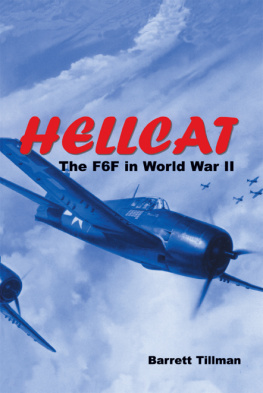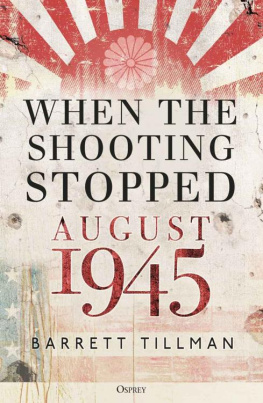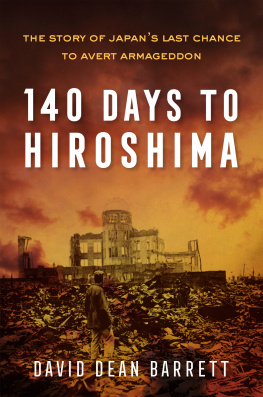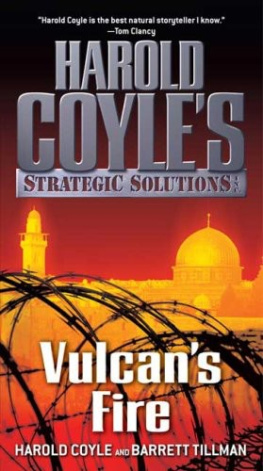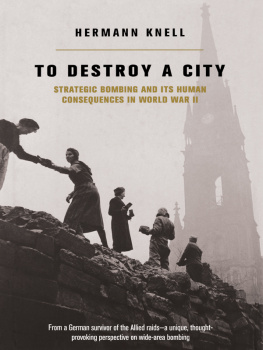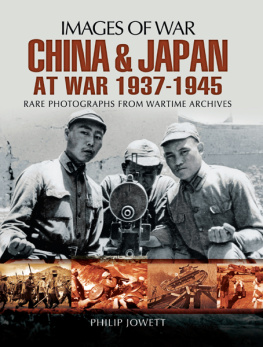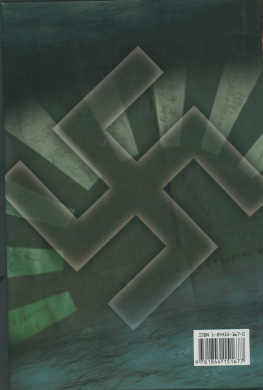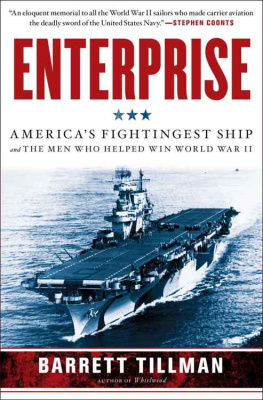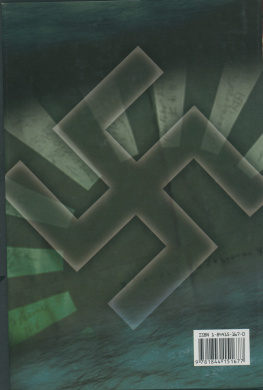
ALSO BY BARRETT TILLMAN

NONFICTION
What We Need: Extravagance and Shortages in Americas Military
Curtis E. LeMay
Heroes: U.S. Army Recipients of the Medal of Honor
Clash of the Carriers: The True Story of the Marianas Turkey Shoot of WW II
The Alpha Bravo Delta Guide to the U.S. Air Force
Above and Beyond: The Aviation Medals of Honor
TBD Devastator Squadrons of WW 2
U.S. Navy Fighter Squadrons and Aces of WW II
Carrier Air War: WW II in Original Color
Wildcats to Tomcats (with Capts. Wally Schirra, R. L. Cormier, & P. R. Wood)
Pushing the Envelope: The Career of Test Pilot Marion Carl (with M. E. Carl)
Sun Downers: VF-11 in WW II
On Yankee Station: The Naval Air War Over Vietnam (with CDR John B. Nichols)
Wildcat: The F4F in WW II
MiG Master: Story of the F-8 Crusader
Hellcat: The F6F in WW II
Corsair: The F4U in WW II and Korea
TBF-TBM Avenger at War
The Dauntless Dive Bomber of WW II
FICTION
Vulcans Fire (with Harold Coyle)
Prometheus Child (with Harold Coyle)
Pandoras Legion (with Harold Coyle)
Hellcats: A Novel of the Pacific War
Dauntless
The Sixth Battle
Warriors

WHIRLWIND
The Air War Against Japan, 19421945
Barrett Tillman


Simon & Schuster
1230 Avenue of the Americas
New York, NY 10020
www.SimonandSchuster.com
Copyright 2010 by Barrett Tillman
All rights reserved, including the right to reproduce this book or portions thereof in any form whatsoever. For information address Simon & Schuster Subsidiary Rights Department, 1230 Avenue of the Americas, New York, NY 10020
First Simon & Schuster hardcover edition March 2010
SIMON & SCHUSTER and colophon are registered trademarks of Simon & Schuster, Inc.
For information about special discounts for bulk purchases, please contact Simon & Schuster Special Sales at 1-866-506-1949 or business@simonandschuster.com.
The Simon & Schuster Speakers Bureau can bring authors to your live event. For more information or to book an event, contact the Simon & Schuster Speakers Bureau at 1-866-248-3049 or visit our website at www.simonspeakers.com .
Manufactured in the United States of America
1 3 5 7 9 10 8 6 4 2
Library of Congress Cataloging-in-Publication Data
Tillman, Barrett.
Whirlwind : the air war against Japan, 19421945 / Barrett Tillman.
p. cm.
Includes bibliographical references and index.
1. World War, 19391945Aerial operations, American.
2. World War, 19391945CampaignsJapan. 3. Bombing,
AerialJapan. I. Title.
D790.T624 2010
940.5449730952dc22 2009049218
ISBN 978-1-4165-8440-7
ISBN 978-1-4165-8502-2 (ebook)
PHOTO CREDITS:
Authors Collection: 7, 12, 13, 14, 16, 17, 18, 24, 25, 26, 27, 28; Andrew Farmer: 29, 30, 31, 32; National Museum of the Pacific War: 1, 2, 3, 4, 5, 6, 11, 15, 19, 33, 34, 36, 37, 38; The National World War II Museum: 35; Donald Nijboer: 20; Tailhook Assn.: 21, 22, 23; USAF via Air Force Test Center Museum: 8, 9, 10.
Dedicated to the memory of Jeff Ethell:
pilot, historian, colleague, friend.
Rock your wings when we rendezvous again
and Ill join on you.
For they have sown the wind, and they shall reap the whirlwind.
HOSEA 8:7
Contents


Preface
D URING THE LAST year of the war in the Pacific, the U.S. Army Air Forces, Navy and Marine Corps, and British Royal Navy conducted a relentless air assault against the Japanese home islands. The attacks came from around the compass: from the west out of China, southwest from Okinawa, due south from the Marianas, northeast from the Aleutians, and from almost anywhere that aircraft carriers steamed. American B-29 bomber crews razed most of the enemys urban-industrial areas and delivered two nuclear weapons that ended the war. But there were many other significant players in the multiservice campaign: carrier-based aviators in Hellcats, Corsairs, Avengers, and Helldivers; long-range patrol bombers from the Aleutians; Mustang pilots from Iwo Jima; and almost everything in the Army Air Forces inventory from Okinawa.
Sixty-five years later, no single volume has examined the Allied air offensive against Japan in its terrible totality. Why there has been so little study of so epic a subject is difficult to explain. Certainly today, when interservice joint operations are not only common but necessary, the 194445 effort begs for detailed attention. Coordination of the various air forces, including land- and carrier-based Navy and Marine air groups, and integration of the British Pacific Fleet (BPF) into the American Fast Carrier Task Force, were substantial achievements on a scale never to be repeated.
The campaign was a long time coming, and a final test of some old theories of war making. As far back as the 1920s, airmen had postulated that strategic bombing could compel an industrialized enemy to surrender, thus avoiding the massive bloodletting of the Great War. But the airpower theorists reckoned from a false premise: that despotic regimes would take pity on their citizens plight as democratic governments were expected to do. In truth, the theory worked in neither direction. In World War II, more than 60,000 Britons died in air attacks, but the U.K.s resolve never cracked. While national resolve was mightily strained in Germany, where the death toll in bombed cities could have run half a million in five years, it held to the end. Perhaps 330,000 Japanese were killed by air attack in one-fifth that time.
The toll was terrible, but rather than fatally undermining civilian morale, bombing achieved a more subtle victory in affecting Japans ability to resist. Moreover, airpower compelled Emperor Hirohito to surrender, sparing Japan a death count that might have grown tenfold in an Allied invasion.
In 1942, Tokyo stood like an Asian colossus astride the sweep of the Pacific and deep into the Chinese mainland. Less than three years later Japan had lost control of its own airspace, and its cities lay open to attack on a scale the world had never seen. With its industry in ruins, Japans chilling policy of arming women and schoolchildren with spears reminds us of the irresistible power of the concentrated Allied assault on Dai Nippon, even as it poses moral questions that persist today.
In the course of writing more than thirty previous histories, I came to know hundreds of veterans of the Pacific War, American and Japanese alike. One thing shines through: they populated a vastly different world than today. With the rise of idealistic globalism, the context in which World War II was fought is difficult for many people to fathom.
Next page

